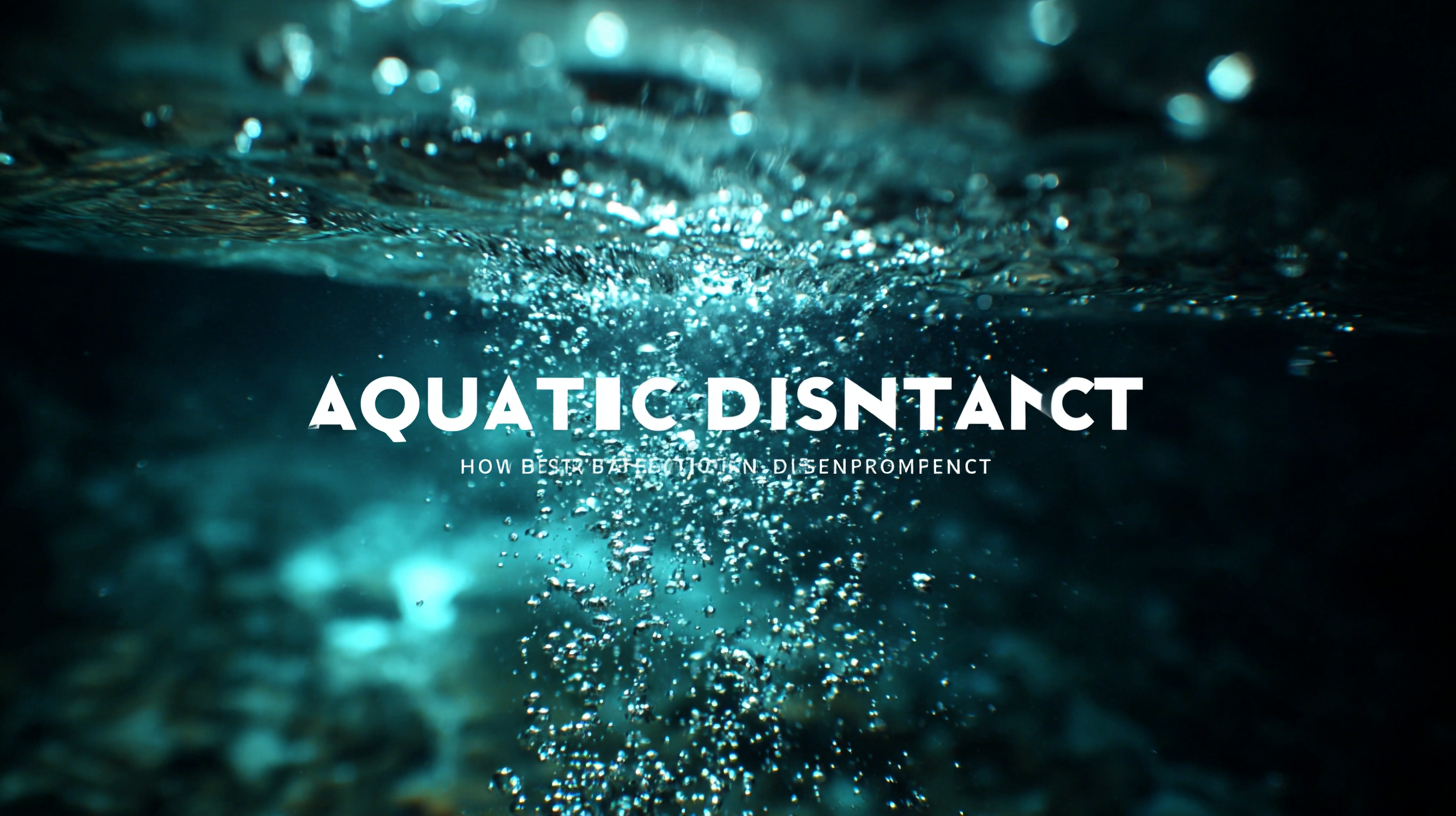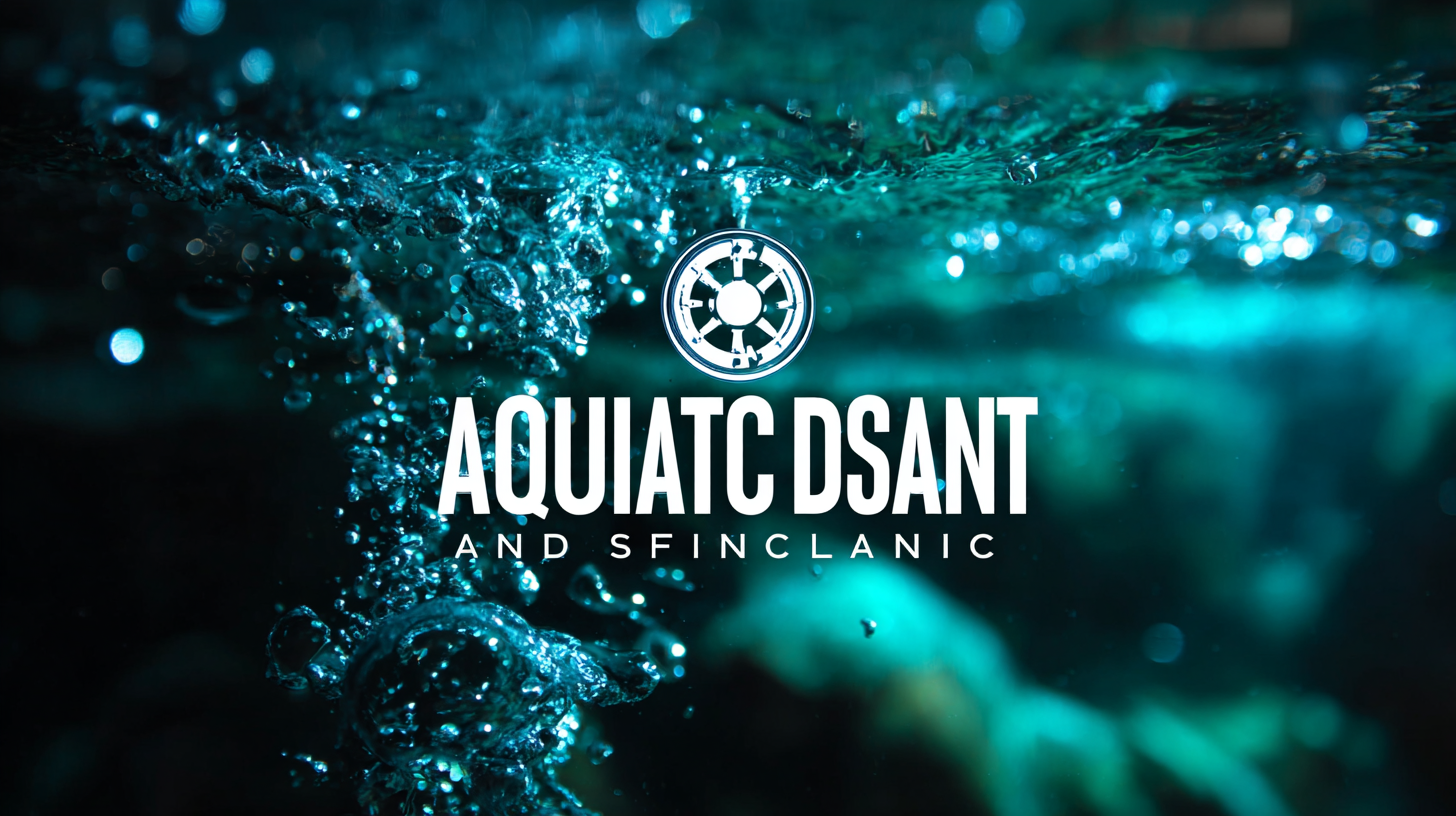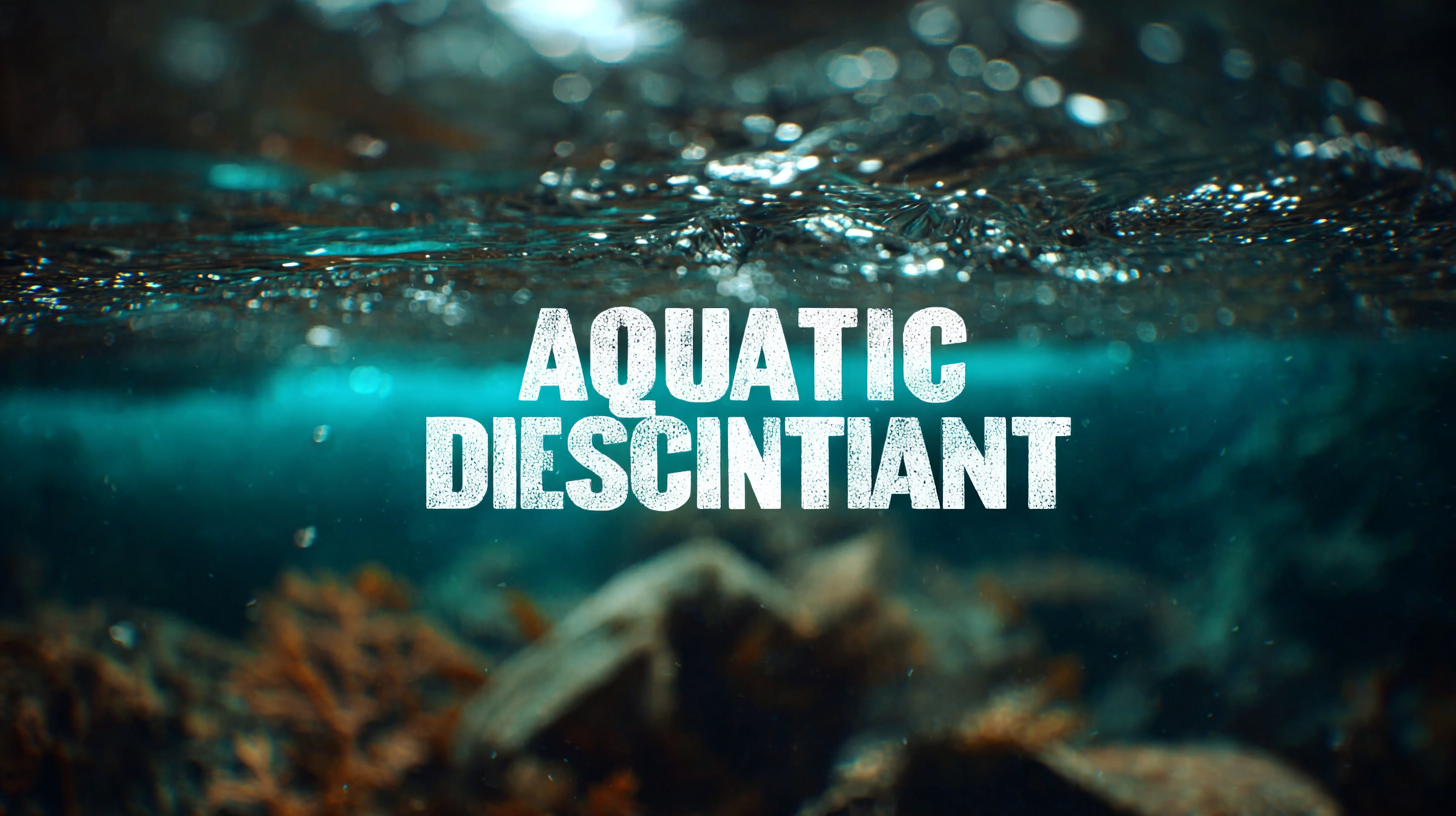In the realm of aquatic management, selecting the right aquatic disinfectant is crucial for ensuring water quality and the health of aquatic life. With the global market for water treatment chemicals projected to reach $50 billion by 2025, the demand for effective disinfectants has never been higher. Factors such as pathogen resistance and the increasing prevalence of waterborne diseases underscore the importance of advanced disinfection methods. A recent report from the Environmental Protection Agency highlights that improper disinfection can lead to significant health risks, making it imperative for aquaculture businesses and recreational water facilities to choose the best aquatic disinfectant tailored to their specific needs. This blog will guide you through a comprehensive comparison of various aquatic disinfectants, focusing on their efficacy, safety, and environmental impact to help you make an informed decision.

The aquatic disinfectant market is evolving rapidly, driven by increasing awareness of water quality and safety, as well as stringent regulations regarding water treatment. According to a recent report by Market Research Future, the global aquatic disinfectant market is projected to reach USD 1.93 billion by 2025, growing at a CAGR of 7.5%. This growth is fueled by the rising demand in sectors such as aquaculture, aquariums, and recreational water facilities, all of which require effective disinfection solutions to prevent disease outbreaks and ensure clean water environments.
Emerging trends indicate a significant shift towards eco-friendly and sustainable disinfectants. Consumers and businesses alike are seeking products that not only meet efficacy standards but also minimize environmental impact. The use of innovative technologies such as electrolysis and advanced oxidation processes is gaining traction. A report from Allied Market Research highlights that the demand for biodegradable disinfectants is expected to surge, reflecting a broader industry movement towards sustainable practices. By 2025, it is anticipated that these products could capture nearly 40% of the market share, underscoring the importance of aligning product choices with ecological considerations in a rapidly evolving market landscape.
This chart illustrates the projected growth in different types of aquatic disinfectants from 2020 to 2025, highlighting key trends in the market.
When selecting the most suitable aquatic disinfectant, understanding your specific needs is crucial, as different applications require tailored solutions. According to a report by the Environmental Protection Agency, the effectiveness of disinfectants can vary drastically depending on the aquatic environment they are intended to purify. For example, disinfectants used in aquaculture must not only eliminate pathogens but also ensure that they do not harm aquatic life. This highlights the importance of choosing products that are both effective and safe for the ecosystem.
Tip: Always check the compatibility of the disinfectant with the targeted aquatic species. Some disinfectants, such as chlorine and ozone, can be effective against a wide range of pathogens, but they may also pose risks to sensitive species if not used correctly.
Another consideration is the type of contaminants present in your specific aquatic application. In recreational waters, such as swimming pools or spas, the primary concern may be bacteria like E. coli or viruses like norovirus. A study published in the Journal of Water Health indicated that the right combination of chlorine and UV treatment can significantly reduce such pathogens. Conversely, in aquaculture or water treatment facilities, a focus on biofilm removal might lead to prioritizing less toxic or more biodegradable options.
Tip: Conduct regular water quality assessments to better understand the contaminants and adjust your disinfectant choice accordingly. This proactive approach ensures a healthier aquatic environment tailored to your specific needs.
When it comes to selecting the right aquatic disinfectant, assessing its efficacy is crucial. Look for products that have undergone rigorous testing and are compliant with safety standards. Certifications from reputable organizations, such as the Environmental Protection Agency (EPA) or other regulatory bodies, can assure you of a disinfectant's effectiveness and safety in aquatic environments. Always check for the specific pathogens the disinfectant claims to eliminate and whether it has demonstrated consistent performance in real-world scenarios.
Tip: Conduct a side-by-side comparison of disinfectants to assess their active ingredients. Understanding the chemistry can help you choose a product that is not only effective but also environmentally friendly. Pay attention to concentration levels, as higher concentrations may not always correlate with better performance.
Another important factor to consider is the contact time required for the disinfectant to be effective. Some products may need to remain in contact with surfaces for longer periods, which could be a logistical issue in busy aquatic settings.
Tip: Prioritize disinfectants that offer rapid action without compromising safety. Quick-drying formulas can help maintain hygiene without the risk of harmful compounds lingering in the water. Always read user reviews and testimonials to gauge real-life experiences with the product's performance and safety.
When selecting the best aquatic disinfectant for your needs, it is crucial to understand the unique features and impacts of various products on water quality and human health. Recent studies highlight significant health risks associated with brominated disinfection byproducts (Br-DBPs) generated during traditional chlorination and chloramination processes. These byproducts are known for their high cytotoxicity, making it essential to evaluate alternatives that minimize harmful residues while ensuring effective pathogen control.
To make an informed choice, consider disinfectants that have a demonstrated ability to effectively manage harmful microorganisms while producing fewer toxic byproducts. For instance, advanced oxidation processes (AOPs), particularly those utilizing Fe(IV), show promise for generating fewer disinfection byproducts and altering the molecular structure of dissolved organic matter in water. Moreover, innovative disinfection technologies, such as micro-nano bubbles, have demonstrated superior efficacy against chlorine-resistant bacteria, offering additional avenues for addressing health risks without compromising water safety.
In addition to evaluating efficacy, it is vital to consider the specific environmental impacts of each disinfectant. Comprehensive health impact assessments indicate that traditional disinfectants like chlorine may pose long-term health risks, including exposure to trihalomethanes. Therefore, prioritizing disinfectants with a reduced toxicological profile, informed by comparative analyses in the field, can aid in selecting the most suitable aquatic disinfectant for both safety and effectiveness.

When selecting an aquatic disinfectant, understanding the regulatory landscape in your region is crucial. Compliance with local regulations not only ensures safety but also enhances the effectiveness of the disinfectant in maintaining healthy aquatic environments. According to the EPA, proper registration and adherence to guidelines are vital for the effective use of disinfectants in marine and freshwater applications. In the United States, for instance, all aquatic disinfectants must be registered with the EPA, and manufacturers must provide data confirming their efficacy against pathogens commonly found in aquatic systems.
Tip: Always check the registration status of a disinfectant with your local regulatory body before purchasing. This ensures that the product meets safety standards and is approved for use in your specific environment.
Moreover, different regions may have varying accepted standards and requirements for aquatic disinfectants. The World Health Organization (WHO) emphasizes the need for compliance with local standards to protect both environmental health and public safety. As regulations evolve, staying informed about changes that could impact your choice of disinfectant is essential.
Tip: Subscribe to industry newsletters or regulatory bulletins to keep abreast of any updates and new compliance measures in your area. This knowledge will empower you to make informed decisions about the disinfectants you choose.

